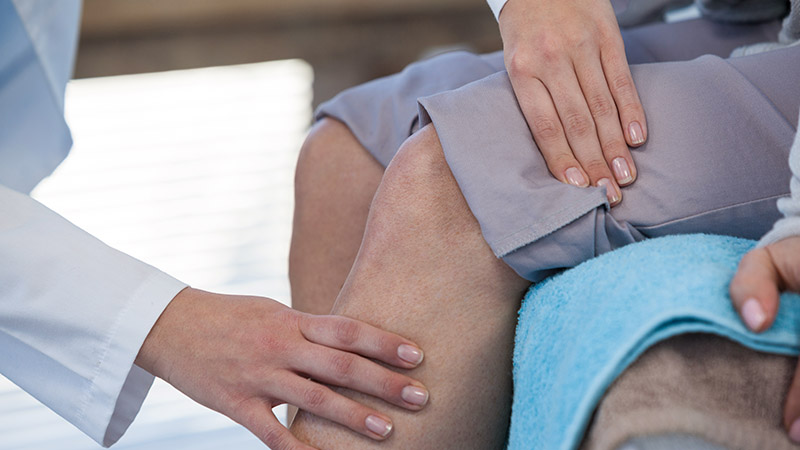The gradual abrasion and degeneration of the cartilaginous structures in the knee joint is called knee arthritis (or knee osteoarthritis). The cartilages, which are normally lubricious, become thinner and peeled off particularly due to age and excessive weight. Unnoticed or with no precautions taken, abrasion advances and results in full dissolution of the cartilaginous structures. With the decomposition of these structures comes pain and difficulty of movement that can reach extremes. Patients find it overwhelming to walk and the pain can become unbearably disturbing even while sleeping. As physicians, we expect patients to see us at the mild stages of the disease and, at this point, our aim is to stop or slow down arthritis with non-surgical methods. Nonetheless, advanced arthritis with excruciating pain and restriction of motion decreasing quality of life to a significant extent calls for total knee arthroplasty (knee replacement).
Total knee arthroplasty is an effective treatment method that helps reduce pain and provides patients with a comfortable life. The operations aims at replacing degenerated joint structures and abraded surfaces with knee prosthetics that would imitate the function of the damaged joint. Even though there is no age limit for total knee replacement, patients over the age of 50 and below 100 kilograms are preferred for the operation. Still, an operation can be considered regardless of age and weight of the patient. Losing weight would prolong prosthetic joint’s life parallel to decrease in pressure load on the joints. Today, the average life of a knee prosthetic is 25 years though this might change according to patient’s weight, age, and habits.
Total Knee Arthroplasty: Surgical Procedure
Total knee replacement surgery is an open surgery procedure and is usually performed under general anaesthesia within 2 hours. Results of total knee arthroplasty is very satisfactory when it is performed by a specialist orthopaedist. After preparing the right operating room conditions, the surgeon first reaches inside the knee joint through a 10cm incision on the front side of the knee. The frayed cartilaginous tissues on the joint surfaces are then cut out and extracted. This is followed by the insertion of the prosthetics prepared specifically for the patient into the incised surface in order to create a new surface for the joint.
Total Knee Arthroplasty: Post-operative Period
Post-operative pain can be taken under control with analgesic medications. Patients can eat 3-4 hours after the operation though they will have to stay in the hospital for 3-4 days in average. For blood drainage both legs are dressed with special socks and a drain is inserted. Patient rests during the first day and they can stand on their feet on the following day. The next day, patients start mild physical exercises. This is followed by the removal of the drain on the fourth day. 10-15 days into the operation, wound is re-dressed and, if required healing is observed, stitches are removed. This visit also marks the beginning of the physiotherapy period. Physiotherapy plays an important role for a healthy and quick recovery process. At the end of 8 weeks, patients are finally ready to head for a more active life style.
 EN
EN TR
TR AR
AR RU
RU